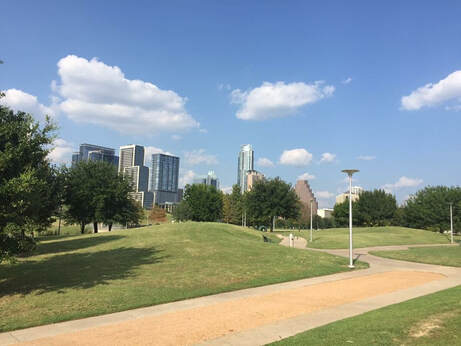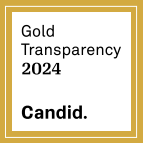 On Wednesday, December 11th, the Austin City Council approved on first reading a proposed comprehensive revision to the land development code (formerly known as CodeNEXT). The Save Our Springs Alliance has been following the drafting of the new code, and we’ve been trying to make it as “green” as possible by suggesting environmentally friendly amendments and supporting positive changes. Although the ultimate vote on the first reading action was split on the council (7-4), we were able to get agreement on many of our requested amendments. Throughout the development of the code, we have received assistance from many council offices; however, we want to give a special thanks to our environmental champions, Council Members Kathie Tovo, Ann Kitchen, Leslie Pool, and Alison Alter (and their respective policy aides), who stuck with us on every major environmental-focused amendment that we requested. We will continue to provide you updates, as the code develops. In the meantime, below is a quick snapshot of some changes included in the code and our progress with incorporating environmentally friendly amendments. To organize our thoughts, we’ve grouped them into the following categories: Green Light (positive changes), Yellow Light (changes to watch), and Red Light (serious concerns). GREEN LIGHT: Positive Changes for the Environment in the New Code:
YELLOW Light: Changes to Watch in the New Code: Impervious Cover. The overall analysis of how the revised land development code impacts the amount of impervious cover that will be built in the city is complicated, to say the least. For some uses, allowable impervious cover entitlements are proposed to be reduced (eg, for single-family homes, impervious cover per site would be reduced from 45% to 40%). For other uses, allowable impervious cover entitlements are proposed to be increased (eg, for 3-10 unit developments, adopted amendments to the could could increase impervious cover up to 60% per site). The idea is that, in shifting around the theoretical maximums from one use to another, the overall entitled impervious cover would balance out, as compared to the existing code. However, we are not comforted by such talking points, as many parts of the City are already over-paved. While we will keep an open mind as additional analyses are conducted, we are generally concerned with the direction of putting more impervious in watersheds already experiencing localized flooding and erosion. We believe a better approach would be to analyze the total amount of impervious cover that is likely to be built under the new code and compare that to what is on the ground today. This would allow the City to better adjust the new code to solve for existing problems (such as localized flooding, urban heating) and more strategically place new impervious cover entitlements in areas that can handle it. Additionally, we believe there should be more conversation around the related consequences of increasing impervious cover for economic purposes, such as the tree removals and loss of green space that result from higher levels of impervious cover per site. Grandfathered Properties. To some extent, the ability for developers to avoid compliance with current code regulations is the biggest impediment that prevents the City from achieving its goals. This is especially true for environmental regulations within the Barton Springs Zone, where developers frequently claim “vested rights” (aka, “grandfathering”) to skirt the environmental requirements of the Save Our Springs Initiative Ordinance. Often times, the only way we can eliminate (or modify) these vested rights is by negotiating for improved water quality regulations when a developer needs additional zoning entitlements from the City. As part of our mapping concerns, the SOS legal team raised concerns with new zoning entitlements being granted on properties that may have claims to vested rights, without requiring compliance with existing environmental regulations. For example, our attorneys found one property in the Barton Springs Zone where a developer might be able to combine the new zoning entitlements with vested rights to build a 90-ft. tower, using up to 65% impervious cover, and still not be required to install SOS-required water quality ponds. We are hopeful that the City will recommend changes to the zoning map or code that could address this concern and ensure that we are working to actively enforce compliance with our environmental regulations. Water Forward & Green Infrastructure. The proposed code includes some amendments that would require larger-scale developments to be more efficient with their use of water, such as green stormwater infrastructure and water benchmarking; however, these changes feel small when compared to the imminent threats that our community is facing from climate change. With the assistance of Council Member Kitchen, we were able to keep conversations afloat on water retention requirements that would redirect stormwater towards beneficial uses onsite. But, there is significantly more work to do. The Water Forward Task Force laid out a plan to improve the water efficiency and climate resiliency of developments in our city. These recommendations are necessary components of ensuring that we will have enough water to serve our residents, as we continue to grow. We will continue to encourage the City Council to take this issue seriously and implement the full recommendations of the Water Forward Task Force as expeditiously as possible. RED Light: Reasons for Serious Concern Heritage Trees. The proposed code is headed in the wrong direction on tree protections. On a 7-4 vote, the Austin City Council voted to include a proposed administrative variance that would permit the removal of Heritage Trees along major streets and corridors. SOS (and the mythical Lorax) thanks Council Members Pool, Alter, Kitchen and Tovo for trying to save Austin’s tree canopy with several amendments. We are also disappointed that the City Council moved forward with reducing the health standard from “Imminent Hazard” to “Extreme Risk”, which allow hundreds of more trees to be killed all across the city before their time. The City has spent quite a bit of time and money at the State Capital trying to save our tree regulations from developers’ lobbying efforts, and it’s disappointing to see our own elected officials chop up our own tree protections. Council Member Ellis helped mitigate these concerns by introducing a density bonus program for tree preservation, which will hopefully require developers to adjust their plans to save the trees; however, we would note that this program would not be required if council maintained our City’s tree protections. A Rushed Process. Wait, what do you mean “rushed”? This process has gone on for YEARS... It is true that the land development code revision process has been in the works for several years; however, it is also true that the current draft of the code was only released on October 4th. Given the extent of the changes, the many different policy areas the code covers, and the impact that it will have on our community, we would encourage the City Council to slow down a bit and let the City staff do more due diligence. We continue to find errors in the language that could have serious consequences (such as a drafting error we caught which would have allowed massive car dealerships to be built in the Barton Springs Zone). While there is a desire to adopt the code and move on, we still need the City Council to properly deliberate and to allow the drafted code language to be fully vetted. Parkland Dedication. Although they were not yet adopted, amendments to the parkland dedication ordinance have been proposed that would diminish the City’s ability to require on-site dedication of parkland. We simply do not have enough parkland to meet the growing needs of our city, and we strongly oppose any amendment that would weaken the City’s parkland dedication requirements. SOS will be signing onto a letter from the Austin Parks Foundation to support them in their efforts to defend the parkland dedication ordinance. Comments are closed.
|
Archives
July 2024
Categories |
Save Our Springs Alliance |
Quick Links |
SOS is a 501 c3 non profit and your donation is tax deductible

 RSS Feed
RSS Feed
